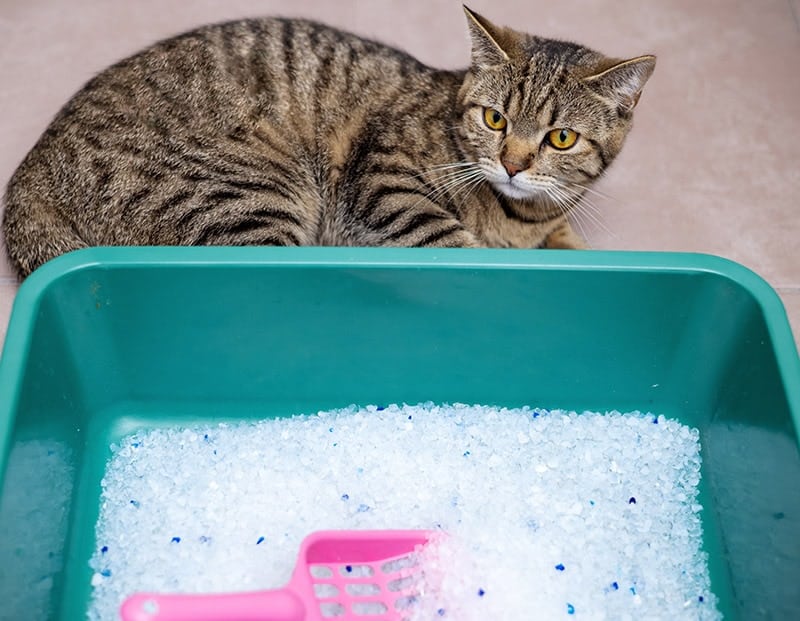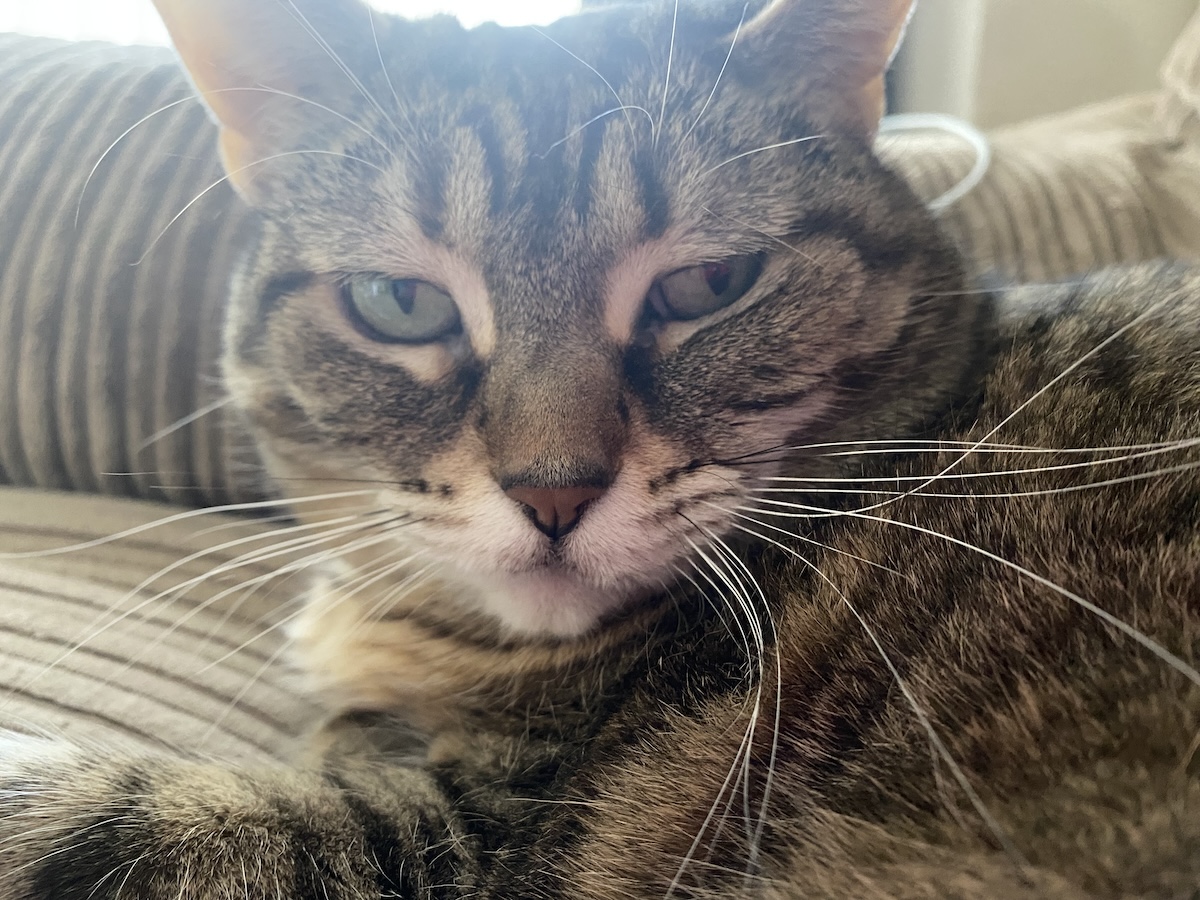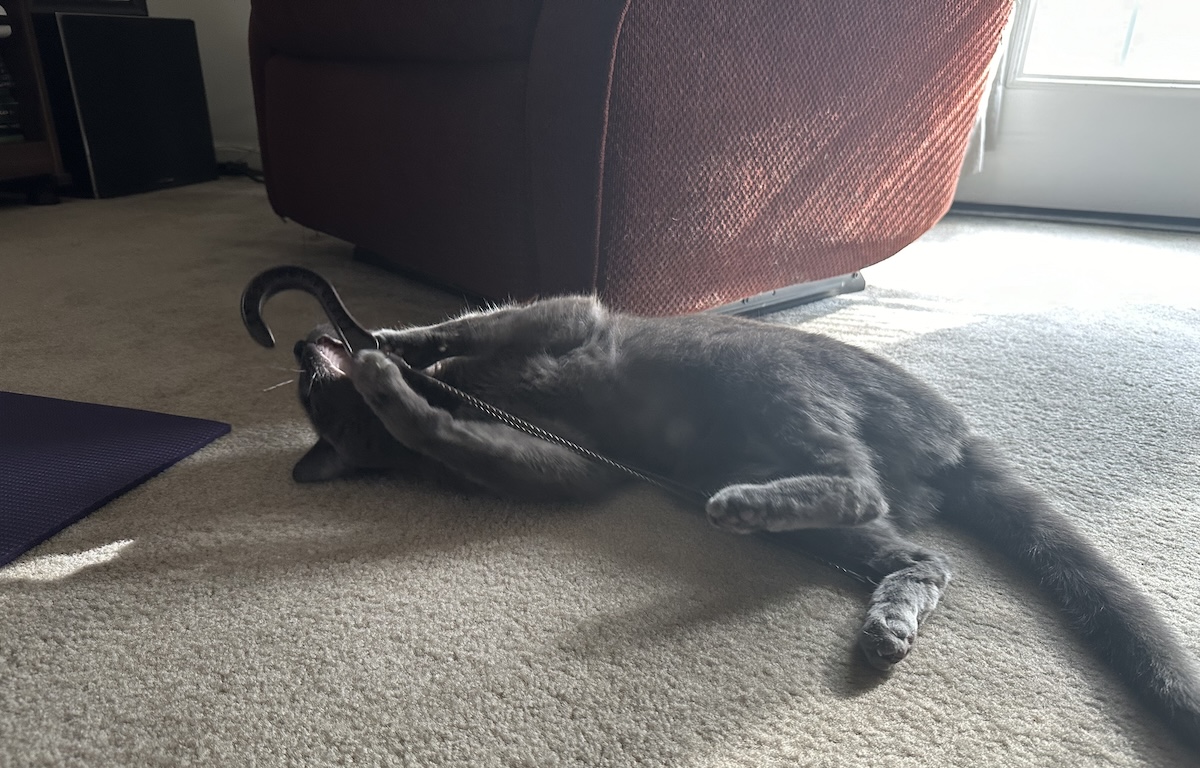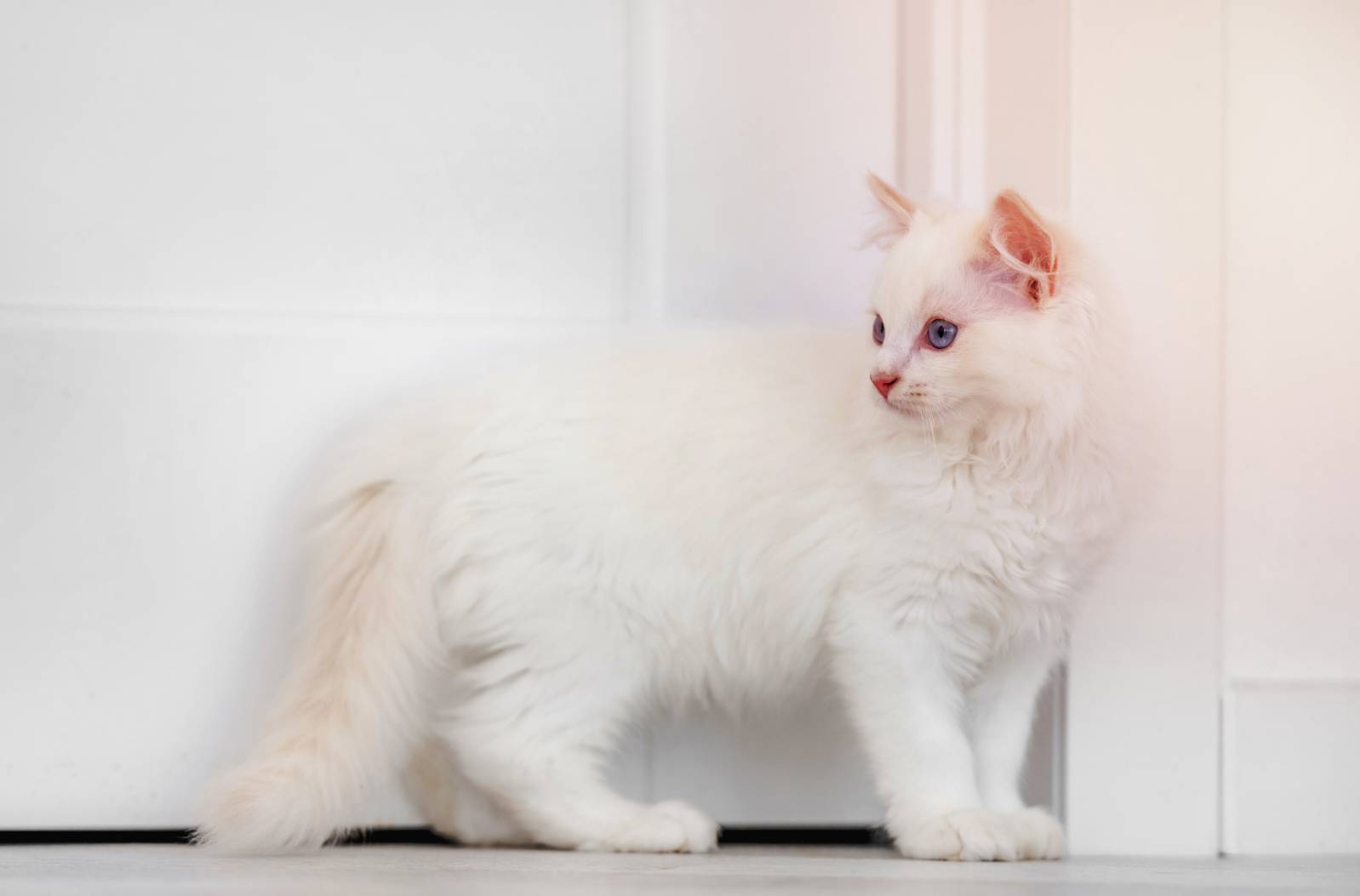Click to Skip Ahead
Cleaning the litter box is arguably the worst part of owning a cat. It’s stinky, messy, and just a dirty job that no one looks forward to, but this inevitable task can be made easier by using the right type of litter.
Crystal cat litter has become popular among cat owners thanks to its convenience and cleanliness. It doesn’t come without its downfalls, however. Read on to learn more about crystal cat litter, what it is, and its pros and cons to determine if it’s worth trying in your household.
What Is Crystal Cat Litter?
Crystal cat litter is made using silica gel beads. This may make you think of the little white packets of crystalline silica in your beef jerky packages, new shoes, and medication bottles, the ones labeled, “Do not eat.” The silica gel in those packets keeps your products fresh and prevents them from getting soggy.
The gel beads in crystal cat litter act similarly, but they’re formulated specifically for litter and effectively absorb liquid and control odor.
Silica gel litter is made from mined quartz sand and produced by mixing the sand particles with water and oxygen. The crystals are covered in pores that enable them to soak up any liquid that they come in contact with.

Pros of Crystal Cat Litter
1. It Is Highly Absorbent
The manufacturing process that makes crystal litter safe creates small pores in the crystals. The pores are highly absorbent, and it is estimated that they can hold up to 40% of their weight in liquid. Its absorption superpower also helps dry out feces, thus controlling odors.
2. It Lasts a Long Time
Thanks to its fantastic absorption, crystal cat litter can last up to a month in the litter box. Since crystal litter doesn’t clump, you won’t be throwing away as much sand as you would if you were using clumping litter. You won’t need to buy litter every time you go to the store, and you’ll send less garbage to your local landfill.
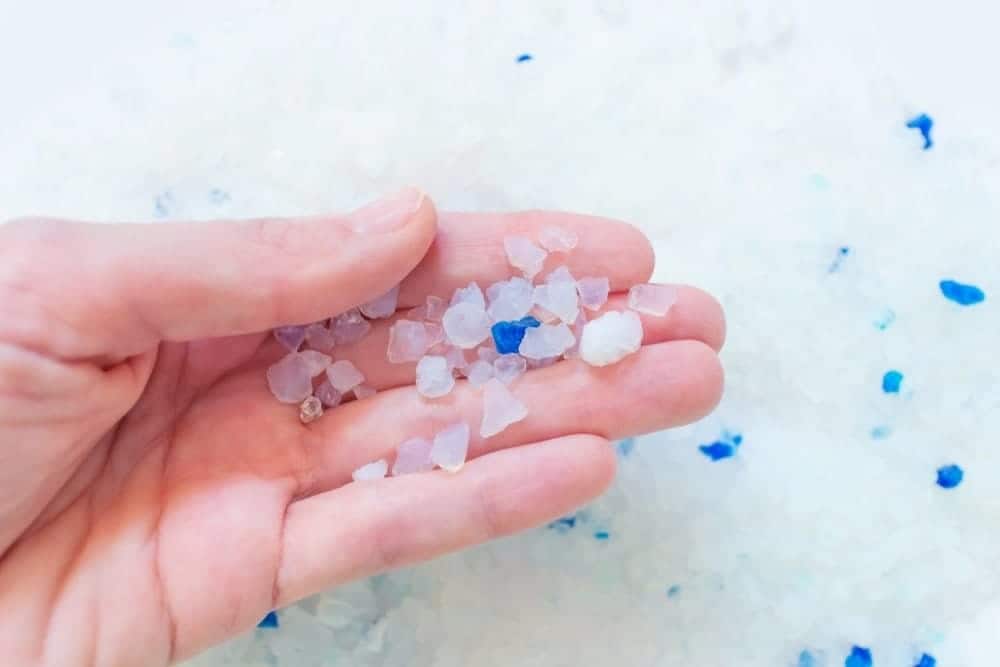
3. It Requires Less Frequent Cleaning
If you switch to crystal cat litter, you won’t need to clean your litter box as often. You’ll only need to remove the feces and stir the remaining crystals. Since you’re not scooping out huge blocks of urine-soaked litter, you will be able to keep odors at bay more easily.
4. It Is Low-Dust
One of the best benefits of crystal cat litter is that it isn’t dusty like its clay counterpart. The crystals won’t turn to fine dust in the bottom of the bag like clay litter, and you won’t notice much powder when you pour it into your cat’s box. Additionally, you’ll be amazed at how little dust you produce when removing feces, especially if you’re used to scooping clay litter.
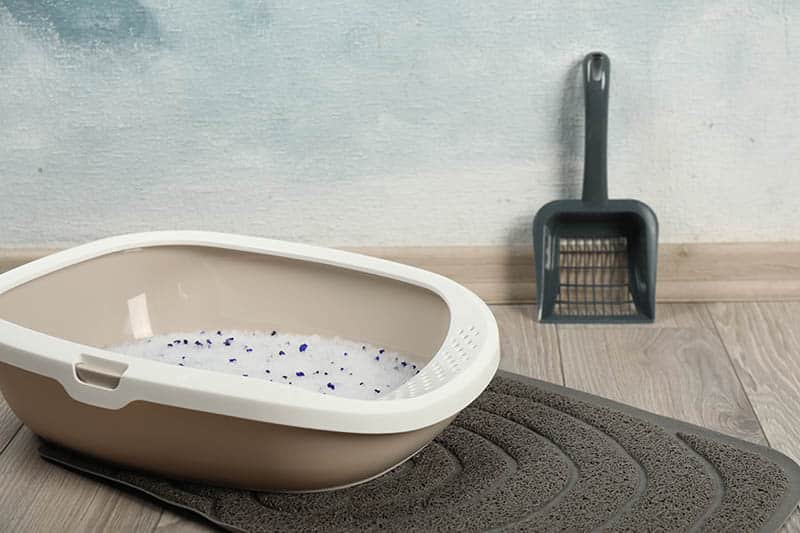
5. It Is Lightweight
Traditional clay litter is heavy. It’s not unusual to find 40+ pound boxes, which can be a pain to tote around the store and in your home. You’ll use much less crystal litter, so it’s sold in smaller, much more manageable-to-carry bags.
Cons of Crystal Cat Litter
1. Urine May Pool
Though the crystals do a good job of soaking up liquid waste, you may notice urine pooling if they become too saturated. Manufacturers recommend stirring the crystals when removing feces to prevent this from happening.
2. It Is Pricey
Crystal litter is more expensive than traditional clay options. However, you may not pay more in the long run because you’ll change the litter less often.
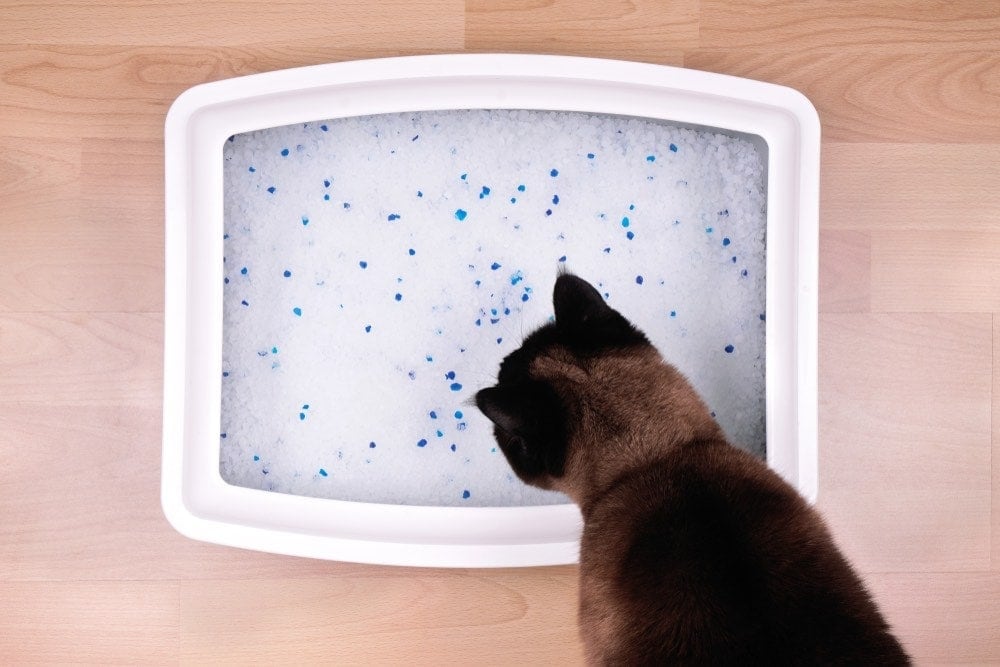
3. It Is Not Eco-Friendly
Crystal litter is derived from quartz, typically procured from open pits. These huge operations require large industrial sites, displacing pre-existing vegetation and habitats. As with other mining operations, the quarries may cause erosion and air and water contamination.
Additionally, crystal litter isn’t biodegradable, flushable, or compostable, so it will inevitably end up in your city’s landfill.
4. It Tracks—a Lot
If you’ve ever gone to the beach, you know how far a grain of sand can travel. You can be vacuuming sand from your carpet for weeks after a beach visit, and the same applies to your crystal litter. You can reduce how much tracks throughout your home by using litter mats or investing in a high-sided litter box.
Other Cat Litter Options
Crystal and clay-based litters aren’t your only options for handling your cat’s waste. Here are other materials worth considering:
- Pine litter
- Wheat litter
- Wood Litter
- Tofu Litter
- Corn litter
- Walnut shell litter
- Paper litter
Conclusion
Crystal cat litter is worth trying if you’re tired of lugging around 40-pound boxes of clay-based litter and giving your biceps a daily workout by scooping heavy, urine-soaked clumps from your cat’s box. Like anything, crystal litter has drawbacks, but the pros may outweigh the cons.
Featured Image Credit: Alexandra Morosanu, Shutterstock

